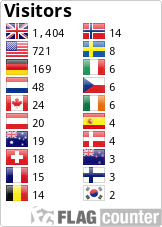Italian Chapel Traditional Cache
-
Difficulty:
-

-
Terrain:
-

Size:  (small)
(small)
Please note Use of geocaching.com services is subject to the terms and conditions
in our disclaimer.
This cache is a 700 ml cliplock container with swaps and room for TB’s and Geocoins.
A beautiful Roman Catholic chapel in Lamb Holm which was constructed by Italian POWs during the Second World War. On the 13th of October 1939 the German U-boat U47, under the command of Lt. Gunther Prien, slipped undetected into Scapa Flow. Prien launched a torpedo attack on the battleship HMS Royal Oak which was lying at anchor in Scapa Bay and within minutes the huge ship sank to the bottom of Scapa Flow with the loss of 833 crew. U47 slipped away undetected through Kirk Sound but the terrible loss of life and obvious failings of the defences to Scapa Flow prompted the call for a more substantial eastern defence of the naval port. In March 1940 Winston Churchill approved the building of ‘causeways’ to link the south isles to Mainland Orkney and so closing off the eastern approaches. Work soon started and continued a-pace but a shortage of local labour was causing delays so in early 1942 Italian POWs were shipped in to work on the huge building project. Many camps were established to house these POWs. The Italians POW status changed however in September 1943 when Italy capitulated to the allies and the workers were given more freedom and were actually paid properly for their labours. The Italians requested a proper place of worship and with the help of padre Father Giacobazzi and Domenico Chiocchetti persuaded the then camp commandant, Major T. P. Buckland, to allow them to build a chapel on Lamb Holm. They were given two Nissen huts joined end to end to convert on the condition all work was carried out outside working hours on the barriers. So the foundations were laid for what has become Orkney’s most visited attraction. One end of the hut was lined with plasterboard to form a sanctuary and an altar, altar-rail and holy water stoop were expertly fashioned from concrete. Domenico Chiocchetti started work on what has become widely recognised as an amazing body of work given the restrictions on time and materials. With the success of the adornment in the sanctuary it was felt the whole chapel should be lined and the entire interior of the chapel was painted to depict brick walls, carved stone, vaulted ceilings and buttresses. Frescos of angelic figures, stained glass windows and an altarpiece depicting the Madonna and Child surrounded by cherubic figures with the scroll inscribed ‘Queen of Peace pray for us’ complete the interior paintwork. All the materials for the decoration were scavenged from wherever possible. Wood was sourced from a wrecked ship for the tabernacle. A rod-screen and gates enclosing the sanctuary were expertly fashioned by Palambi from scrap metal. He also made two candelabra which stand on the alter alongside four brass candelabra made by Primavera. Chiocchetti’s work and enthusiasm for the project is indisputable but many others contributed extensively to the project. Buttapasta, a cement worker; Palumbi, a smith; Primavera and Micheloni, electricians; Barcoglioni, Battiato, Devitto, Fornasier, Pennisi, Sforza and others also added their assistance. As work progressed inside it was decided to construct a more attractive façade for the front of the huts and Buttapasta set to work building an ornate frontage with pillars, Gothic pinnacles, archway and bell-tower. Directly above the door on the front of the archway Pennisi sculpted a head of Christ from red clay complete with thorn crown. Finally a thick layer of cement was applied to the entire outside of the Nissen huts to protect it from the Orkney weather. With the work on the Churchill Barriers complete the prisoners were shipped out in September 1944. Chiocchetti remained behind for two weeks to complete the font which he was working on. The chapel had only been used for a very short time but it remains today as an amazing testament to man’s endeavour to overcome adversity and a dedication to their faith. In 1960 Domenico Chiocchetti (then residing in Moena, Italy) returned to Orkney to assist with a restoration project. He remained for three weeks carrying out a variety of repairs and on his departure he wrote a letter to the people of Orkney in which he said: “The chapel is yours - for you to love and preserve. I take with me to Italy the remembrance of your kindness and wonderful hospitality. . . I thank the authorities of Kirkwall, the courteous preservation committee, and all those who directly or indirectly have collaborated for the success of this work and for having given me the joy of seeing again the little chapel of Lambholm where I, in leaving, leave a part of my heart”. - Domenico Chiocchetti - 11th April 1960.
Additional Hints
(Decrypt)
Pbeare Cbfg Haqre Fgbarf